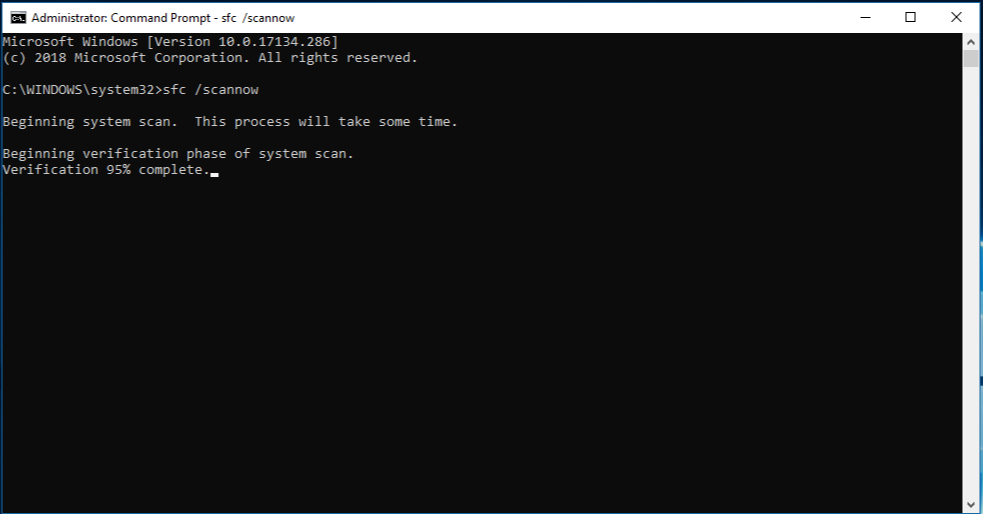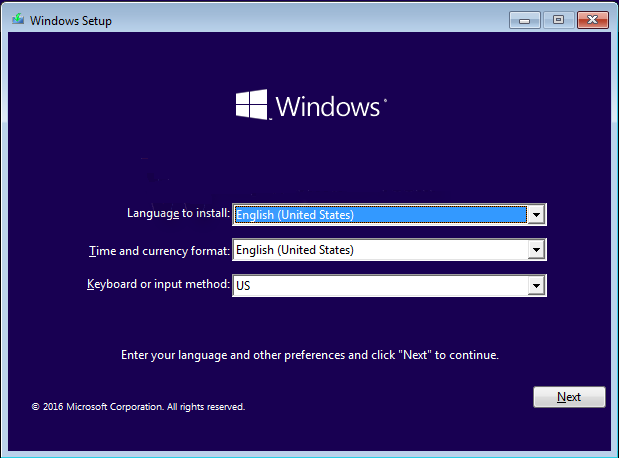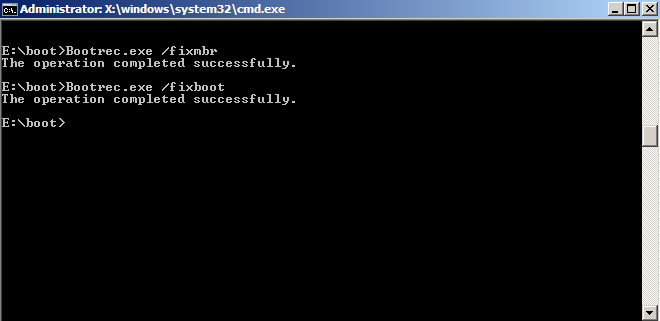This article explores troubleshooting methods and solutions for fixing Windows boot errors using the bcdboot.exe tool.
Introduction to bcdboot.exe
bcdboot.exe is a powerful tool used to troubleshoot and fix Windows boot errors. It is especially useful when the boot files or the Boot Configuration Data (BCD) get corrupted or are missing. To use bcdboot.exe, you need to open the Command Prompt as an administrator.
The basic syntax of the bcdboot command is:
bcdboot [drive:]windows /s [drive:]
Here, [drive:] refers to the system partition where Windows is installed. For example, if Windows is installed on the C: drive, the command would be:
bcdboot c:windows /s c:
After running the command, you need to reboot your system.
bcdboot.exe can also be used with different arguments to perform specific actions, such as creating a new BCD store, setting the default boot entry, or updating the boot files on a specific volume.
Purpose and Function of bcdboot.exe
The purpose of bcdboot.exe is to troubleshoot and fix Windows boot errors. It is a command-line tool that helps in creating or repairing the Boot Configuration Data (BCD) store.
To use bcdboot.exe, you need to specify the location of the Windows installation using the /l option, followed by the drive letter and the path to the Windows folder. For example, c:windows /s c sets the system partition to the C drive.
You can also use bcdboot.exe to repair the boot environment on a different volume by specifying the drive letter and the path using the /s option.
Some common reasons for using bcdboot.exe include fixing boot errors, restoring the Windows bootloader, changing the boot order, and repairing the BCD store.
Origin and Creator of bcdboot.exe
The origin and creator of bcdboot.exe can be traced back to Microsoft. bcdboot.exe is a command-line tool that is used to troubleshoot and fix Windows boot errors. It plays a crucial role in the Windows boot process by creating or repairing the system partition files required for a successful boot.
To fix boot errors using bcdboot.exe, you can follow these steps:
1. Open the Windows Recovery Environment or boot from a Windows installation DVD or USB.
2. Access the command prompt by selecting “Command Prompt” from the options menu.
3. Use the command “bcdboot c:windows /s c:” to repair the boot files on the C: drive (replace “c:windows” with the appropriate path if needed).
4. Reboot your system and check if the boot errors have been resolved.
It is important to note that the syntax and arguments for bcdboot.exe may vary depending on your specific setup and the reasons for the boot errors. For more detailed instructions and information, you can refer to resources like SS64.com or the official Microsoft documentation.
Legitimacy and Safety of bcdboot.exe
bcdboot.exe is a legitimate and safe tool that can be used to troubleshoot and fix Windows boot errors. It is a command-line utility that is included in the Windows Recovery Environment. With bcdboot.exe, you can repair the boot files and restore the Windows bootloader to its default settings.
To use bcdboot.exe, open a command prompt with administrative privileges and type “bcdboot.exe c:windows /s c:“. This command will copy the necessary boot files from the Windows partition to the system partition and update the boot configuration data.
It is important to note that the syntax and usage of bcdboot.exe may vary depending on the version of Windows and the boot environment (BIOS or UEFI) you are using. For detailed instructions and examples, you can refer to the documentation on websites like SS64.com.
Understanding bcdboot.exe System File
bcdboot.exe is a powerful command-line tool used to troubleshoot and fix Windows boot errors. It plays a crucial role in the boot process by creating or repairing the Boot Configuration Data (BCD) store.
To use bcdboot.exe effectively, you need to understand its syntax and usage. The syntax of bcdboot.exe involves specifying the target disk and the location of the Windows operating system files.
For example, to install the boot files on the system partition, you would use the command:
bcdboot c:windows /s c:
It’s important to note that bcdboot.exe can be run from either the Windows Recovery Environment or a running Windows installation. Additionally, it supports both BIOS and UEFI firmware.
By understanding how to use bcdboot.exe correctly, you can resolve common boot errors and ensure the smooth operation of your Windows system.
Usage and Startup of bcdboot.exe
To troubleshoot and fix Windows boot errors using bcdboot.exe, follow these steps:
1. Insert a Windows installation DVD or create a bootable USB using BackupAssist Lifeline media.
2. Set the boot device to the DVD/USB in your system’s firmware settings.
3. Restart your computer and press any key to boot from the DVD/USB.
4. Select your language and keyboard locale.
5. In the system recovery options, choose “Command Prompt.”
6. Use the command “bcdboot
7. Restart your computer and check if the boot error is resolved.
Troubleshooting bcdboot.exe Issues
- Check the system requirements:
- Ensure that your computer meets the minimum system requirements for running bcdboot.exe.
- Verify that your computer has enough available storage space to perform the boot repair process.

- Run a system file checker scan:
- Open the Command Prompt as an administrator.
- Type the command “sfc /scannow” and press Enter.

- Wait for the scan to complete and follow any prompts or instructions provided.
- Run the bootrec utility:
- Boot your computer using a Windows installation media or recovery drive.
- Choose the appropriate language preferences and click “Next”.

- Select “Repair your computer” and navigate to the Troubleshoot > Advanced options > Command Prompt.
- Type the following commands one by one, pressing Enter after each:
- “bootrec /fixmbr“
- “bootrec /fixboot“
- “bootrec /scanos“

- “bootrec /rebuildbcd“
- Restart your computer and check if the boot issues are resolved.
- Restore the BCD store:
- Boot your computer using a Windows installation media or recovery drive.
- Choose the appropriate language preferences and click “Next”.

- Select “Repair your computer” and navigate to the Troubleshoot > Advanced options > Command Prompt.
- Type the command “bcdedit /enum all” and press Enter to view the current configuration.
- If necessary, backup the current BCD store by typing “ren BCD BCD.old” and pressing Enter.
- To restore the BCD store, type the command “bootrec /rebuildbcd” and press Enter.

- Follow any prompts or instructions provided and restart your computer.
- Perform a system restore:
- Boot your computer using a Windows installation media or recovery drive.
- Choose the appropriate language preferences and click “Next”.

- Select “Repair your computer” and navigate to the Troubleshoot > Advanced options > System Restore.
- Select a restore point prior to experiencing the bcdboot.exe issues.
- Follow the on-screen instructions to complete the system restore process.
- Reinstall or repair Windows:
- Boot your computer using a Windows installation media or recovery drive.
- Choose the appropriate language preferences and click “Next”.
- Select “Repair your computer” and navigate to the Troubleshoot > Advanced options > Startup Repair.
- Follow the on-screen instructions to reinstall or repair Windows.
High CPU Usage and Performance Impact of bcdboot.exe
bcdboot.exe is a Windows command-line tool used for troubleshooting and fixing boot errors. However, it can sometimes cause high CPU usage and impact system performance. To address this issue, follow these steps:
1. Open the Command Prompt as an administrator.
2. Type “bcdboot.exe /cleanup” and press Enter to clean up the Boot Configuration Data (BCD) store.
3. If the issue persists, try “bcdboot.exe /rebuildbcd” to rebuild the BCD store.
4. You can also use “bcdboot.exe /import” to import the boot files from a backup.
5. If none of the above solutions work, try using the “bcdboot.exe /fixboot” command to fix the boot sector.
Malware Concerns and Removal Tools for bcdboot.exe
If you suspect that your bcdboot.exe file has been infected with malware, it’s crucial to take immediate action to prevent further damage to your system. Here are some steps you can take to troubleshoot and remove malware from bcdboot.exe:
1. Run a full system scan using a reputable antivirus or anti-malware software. This will help detect and remove any malicious files or programs affecting bcdboot.exe.
2. Update your antivirus software to ensure it has the latest virus definitions. This will enhance its ability to detect and remove new and emerging malware threats.
3. If the antivirus scan detects any malware related to bcdboot.exe, follow the recommended actions provided by the software to remove or quarantine the infected files.
4. Consider using specialized malware removal tools such as Malwarebytes or Norton Power Eraser to target and eliminate stubborn malware that may have evaded detection by your antivirus software.
Compatibility with Different Windows Versions
bcdboot.exe Troubleshoot and Fix Windows Boot Errors
| Windows Version | Compatibility |
|---|---|
| Windows 10 | Compatible |
| Windows 8.1 | Compatible |
| Windows 8 | Compatible |
| Windows 7 | Compatible |
| Windows Vista | Compatible |
| Windows XP | Not Compatible |
Associated Software and Alternatives to bcdboot.exe
If you’re experiencing Windows boot errors, there are alternative software options to bcdboot. exe that can help you troubleshoot and fix the issue. One such alternative is BackupAssist Lifeline media, which provides a bootable environment for system recovery. Additionally, you can use the cmd command with SS64. com to access the disk and fix boot errors.
Another option is to use the diskpart command to manage disk partitions and fix boot sector issues. When using these alternatives, it’s important to follow the correct syntax and format for the commands. Ensure that you have the necessary permissions and are working on the correct disk or drive. By utilizing these alternative options, you can effectively troubleshoot and fix Windows boot errors without relying solely on bcdboot. exe.
Downloading and Updating bcdboot.exe
Downloading and updating bcdboot.exe is essential for troubleshooting and fixing Windows boot errors. To download the latest version of bcdboot.exe, visit the official Microsoft website or trusted software repositories. Once downloaded, follow these steps to update bcdboot.exe:
1. Open Command Prompt as an administrator.
2. Navigate to the directory where bcdboot.exe is located using the “cd” command.
3. Use the following syntax: bcdboot.exe [drive:]windows [drive:] /s [destination_drive]: to update bcdboot.exe.
4. Replace “[drive:]” with the appropriate drive letter where Windows is installed.
5. Replace “[destination_drive:]” with the drive letter where you want to update bcdboot.exe.
6. Press Enter to execute the command.
Updating bcdboot.exe ensures that your Windows boot files are up to date, reducing the chances of boot errors. It is important to keep bcdboot.exe updated to maintain a stable boot device and avoid potential system issues.
